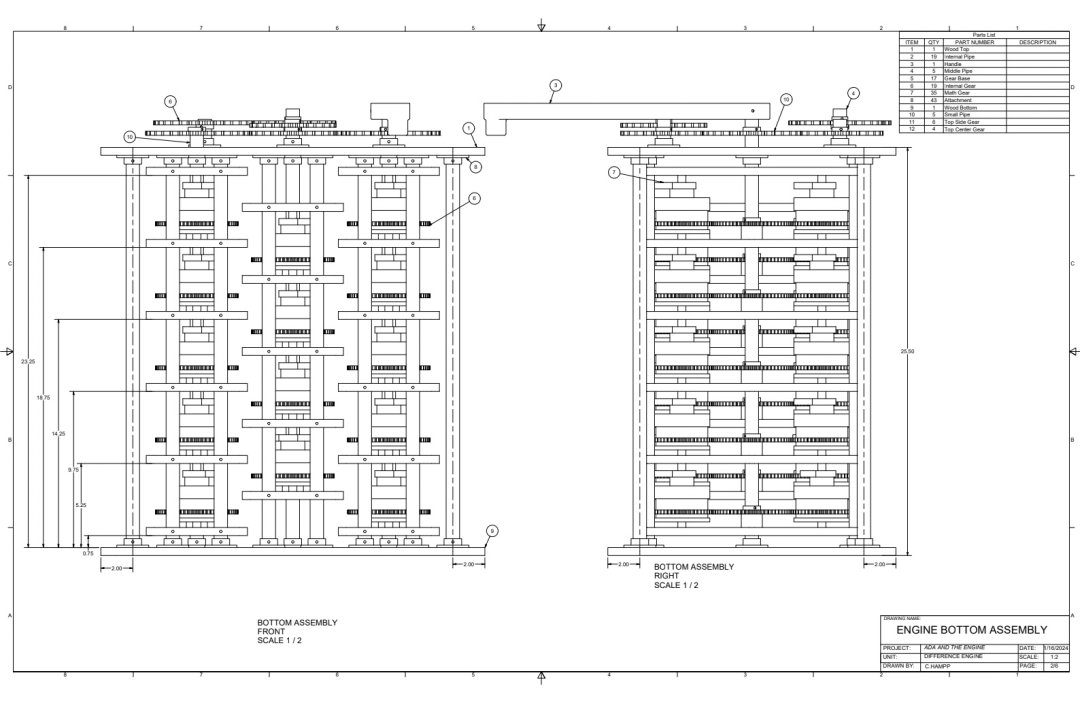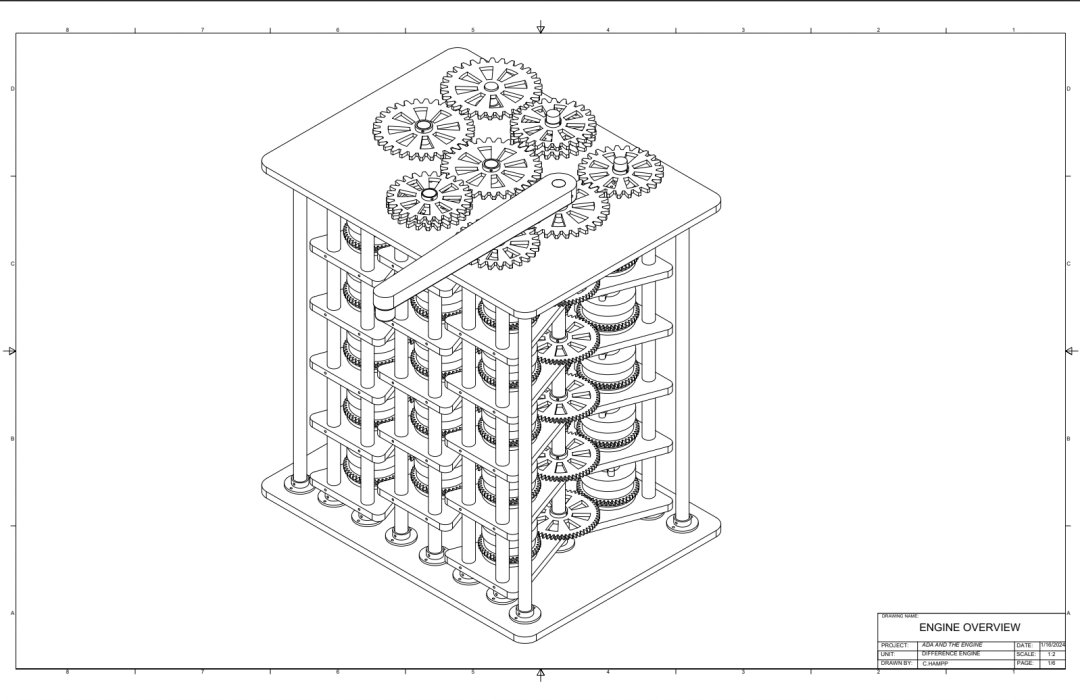3-D Printed Model of a Difference Engine for the Stage
In 1832, Charles Babbage created a model of his Difference Engine, a machine that would be able to perform a variety of complex mathematic functions. The engine could effectively calculate large, complex mathematics more efficiently than a human. Ada Lovelace, often considered the first computer programmer, called Babbage's model a "thinking machine." A "thinking machine" is something that might sound familiar to audiences in 2024, calling forth ideas of Artificial Intelligence. In many ways, the Difference Engine lays the groundwork for computers, and indeed AI. In the spring, the School of Performing Arts produced the play "Ada and the Engine," which focuses on Lovelace, her contributions to computer programming, and her relationship with Babbage. For this production, Mechanical Engineering student Catherine Hampp has designed and built a 3-D printed model of the Difference Engine. This project blends new science and old, and examines the intersection between performing arts and technology. Visitors will have a hands-on experience, engaging with the model and making it move. They learn more about the Difference Engine and the process of transforming a piece of history into a contemporary prop for the stage.
CAD Drawing of a Difference Engine

CAD Profile Drawing of a Difference Engine
Topics
Exhibitor
Kelley Holley
Catherine Hampp
Alison Maselek
Skyler Herman
Advisor(s)
Kelley Holley (me)
Organization
This was a prop that is being created by a student for the School of Performing Arts' spring production of "Ada and the Engine."
Thank you to all of our sponsors!








